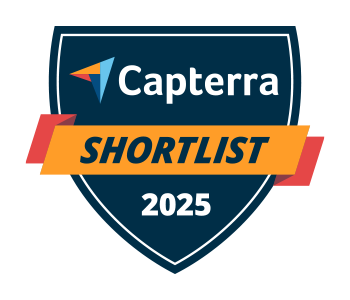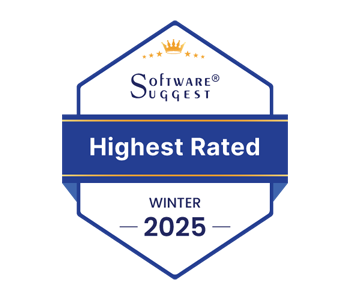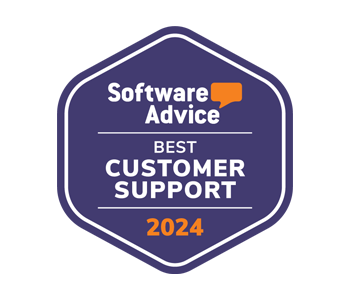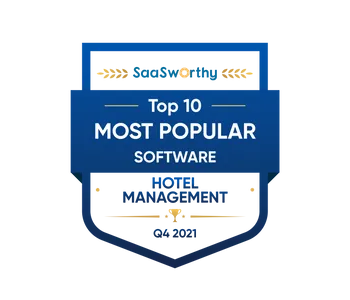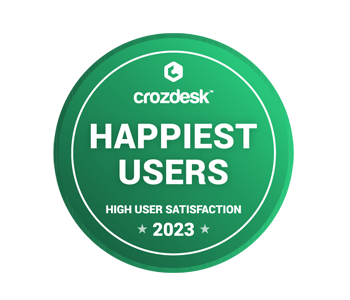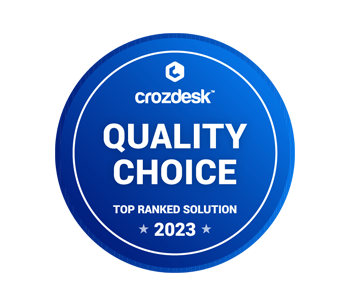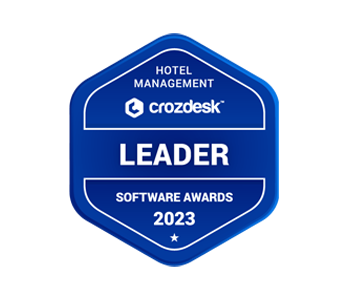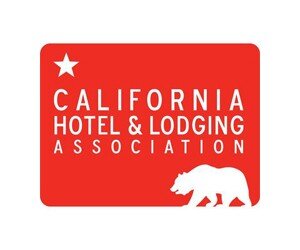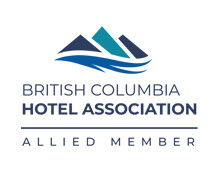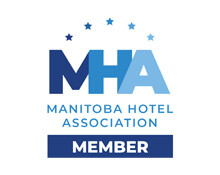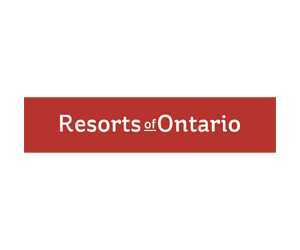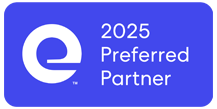During this time, keeping social with your guests through social media is more important than ever. But we get it, you’re busy and who has the time?
There are many ways to organize a social media strategy for your hotel. If your strategy is of the “fly by the seat of your pants” variety, you’re not alone. With many competing priorities, small hotels often manage social media off the side of their desks and only when they have five minutes to spare.
But what if we told you that there’s a simple social media method you can use that will keep your content consistent and your audience engaged — plus save you time in the process?
In just three steps, we’ll show you:
- How to determine social media content buckets that support your hotel’s brand vision.
- How to maximize new social media content and repurpose existing content to save you time and money.
- How to choose where and how to share your social media content for maximum impact.
| Does my hotel need social media? Is social media really important for a hotel? Low likes, shares, and comments can make it feel like a wasted effort. In fact, organic reach on Facebook is down around to 5% of your followers, which means your post will only show up on the news feeds of 5% of your total followers. Nonetheless, it’s important to treat your social media as an extension of your website. Many times potential customers will check out your social media accounts during their decision-making journey. So while numbers appear low, the number of eyes on your page posts may be much greater than you realize. |
1. Develop Branded Content Buckets
Does your hotel have business pillars? If so, you’ll want to develop social media content pillars (or buckets) that support each one.
Start with Your Mission Statement
If you haven’t developed pillars for your business, not to worry. They’re generally based on your hotel’s mission statement. If you don’t have a mission statement, well, there’s no time like the present. The Hilton has a very well-known mission statement, so let’s start here as an example:
To be the most hospitable company in the world by creating heartfelt experiences for Guests, meaningful opportunities for Team Members, high value for Owners and a positive impact in our communities.
Business Pillars
To break this down, the Hilton’s business pillars may be something like this:
- Be number one in hospitality.
- Create heartfelt experiences for guests to develop brand loyalty.
- Attract top employee talent with meaningful work opportunities.
- Generate a profit and increase shareholder value.
- Make a positive impact in our communities.
Content Buckets
The object of social media is to support your business objectives. So take those pillars above and turn them into your social media content buckets. For each bucket, brainstorm what type of content might support that pillar:
- Hospitality:
- Go behind-the-scenes at your hotel to tell stories about going the extra mile.
- Highlight hotel amenities: sumptuous dining, comfy beds, spotless lobby.
- Be an online concierge and highlight area attractions, events and dining.
- Heartfelt guest experiences:
- Surprise and delight stories, such as sparkling wine waiting in the room of a couple celebrating an anniversary.
- User-generated content (customer photos) and testimonials.
- Attract employees:
- Employee profiles and quotes from staff attract applicants as well as appeal to potential guests.
- Promote job vacancies.
- Generate a profit:
- Sales, promotions, packages.
- Community:
- Posts showing events, givebacks, donations.
Now that you have categorized the type of content you want to share on your hotel’s social media, give each pillar a percentage based on your priorities. The breakdown may look like this:
- Hospitality: 40%
- Guest Experiences: 40%
- Employees: 5%
- Profit: 10%
- Community: 5%
Pro-tip: While you want to see a return on investment on your hotel’s social media, don’t make every post overtly about making a sale, because that will turn away your audience. That’s why we’ve allotted only 10% for the Profit content bucket here. Save your hard-sells for your digital advertising.
2. Maximize and Repurpose Social Media Content
Does it feel like a lot of content? Take a deep breath and remember we’re going to show you how to maximize what you have and what you’re creating.
While algorithms favor the more-content-the-better approach (with Facebook recommendations at 3-7 posts a week, and Instagram 7-10 posts a week), the ball is in your court in terms of your capacity. Whatever cadence you choose, post consistently.
New Content
When creating new content, think of your biggest piece of content and how that’s the top of your content food chain.
Make a video: Videos are best in terms of the content food chain. YouTube is second only to Google when it comes to search engines. Once a month, pick an expert on one aspect of your hotel. For example, the chef can give you a tour of the kitchen, a concierge can talk about area attractions, or the manager can talk about what’s unique about your hotel. You can also share a guest story!
Share this video on YouTube or upload it natively to Facebook if you aren’t using YouTube. You can also upload this video to Instagram as a post or as IGTV, depending on the length.
Make a blog post: Transcribe the video and clean it up a little. This becomes your blog post! Share a link to your blog post in your social media.
Make social posts: Take digestible chunks from your blog post and pair them with a picture. These are your social posts for the month!
Make Stories: Break down your blog post into quotable tidbits and format with images. This becomes your Instagram Story content!
From one video, you’ve created the bulk of your content for the month.
Existing Content
To fill out the remainder of your content buckets not fulfilled by your new content, use what you already have! It’s okay to repeat content on your platforms because it won’t have reached everyone. Or use that content and use it in a different way. Existing content examples include:
- blog posts
- website content
- photo files
- old social media posts
- guest testimonials
- user-generated content
Remember sharing is caring! Your content doesn’t have to only be about your hotel. Share posts from your area’s tourism board or a nearby restaurant. Maybe a prominent magazine featured your town — these are perfect opportunities that leverage content you didn’t need to create while aligning yourself with other prominent brands to reach new audiences.
Pro-tip: While you should be consistent in your branding, don’t get caught up in being perfect. You’re not creating a website or a brochure. It’s more about being relevant and sharing your brand’s overall story with content that supports your hotel’s mission in a way that humanizes your brand. Too perfect isn’t human.
3. Where to Share Your Social Media Content for Maximum Impact
Now that you have your content ready and planned, where do you share it? You definitely don’t need to be on every platform — in fact, we advise against it! Pick two to three that are aligned with your business (like Facebook and Instagram) and do those well.
Sharing content is not quite as simple as duplicating it across platforms, because each one has a different purpose.
Here’s a breakdown of today’s most popular channels and what they are known for:
- Facebook is for the heart
- Instagram is aspirational
- Twitter is for the brain
- LinkedIn is for business
- YouTube is for entertainment
- Pinterest is for planning and dreaming
- TikTok is for having fun
Think about the purpose of each social media channel and tweak your content to make it fit. Your options are:
- Share the same content (picture, story, video) but alter the description, aligning it to the purpose of the platform.
- Pick and choose the platform it makes the most sense to share on. Not all content needs to go on every channel.
Give your audience a reason to follow you on your different channels. If it’s all the same, following you in one spot is good enough.
BONUS: Social Media Management
Use a simple spreadsheet to plot out your content buckets, what content falls into those buckets, and what platforms you’ll share that content on.
Next, we recommend using a social media management tool to help you plan and schedule your content. You can set aside a few hours and schedule your entire social media for a month using a tool like Hootsuite, Loomly, Buffer, or Later. They will not only automatically post your content as scheduled, but capture analytics as well.
A word to the wise: even though your content is automated, don’t forget to monitor your channels and engage with comments! This will help your content get shown more by the platform’s algorithm and is just good customer service.
Lastly, ensure your website and booking engine are mobile-optimized to accommodate those casual social media perusers and make it easy for them to convert into customers.
You may also like these blogs:
A Hotelier’s Guide to Social Media Messaging during the Covid-19 Crisis
What to Post: Ideas for Creating Engaging Hotel Social Media Content









